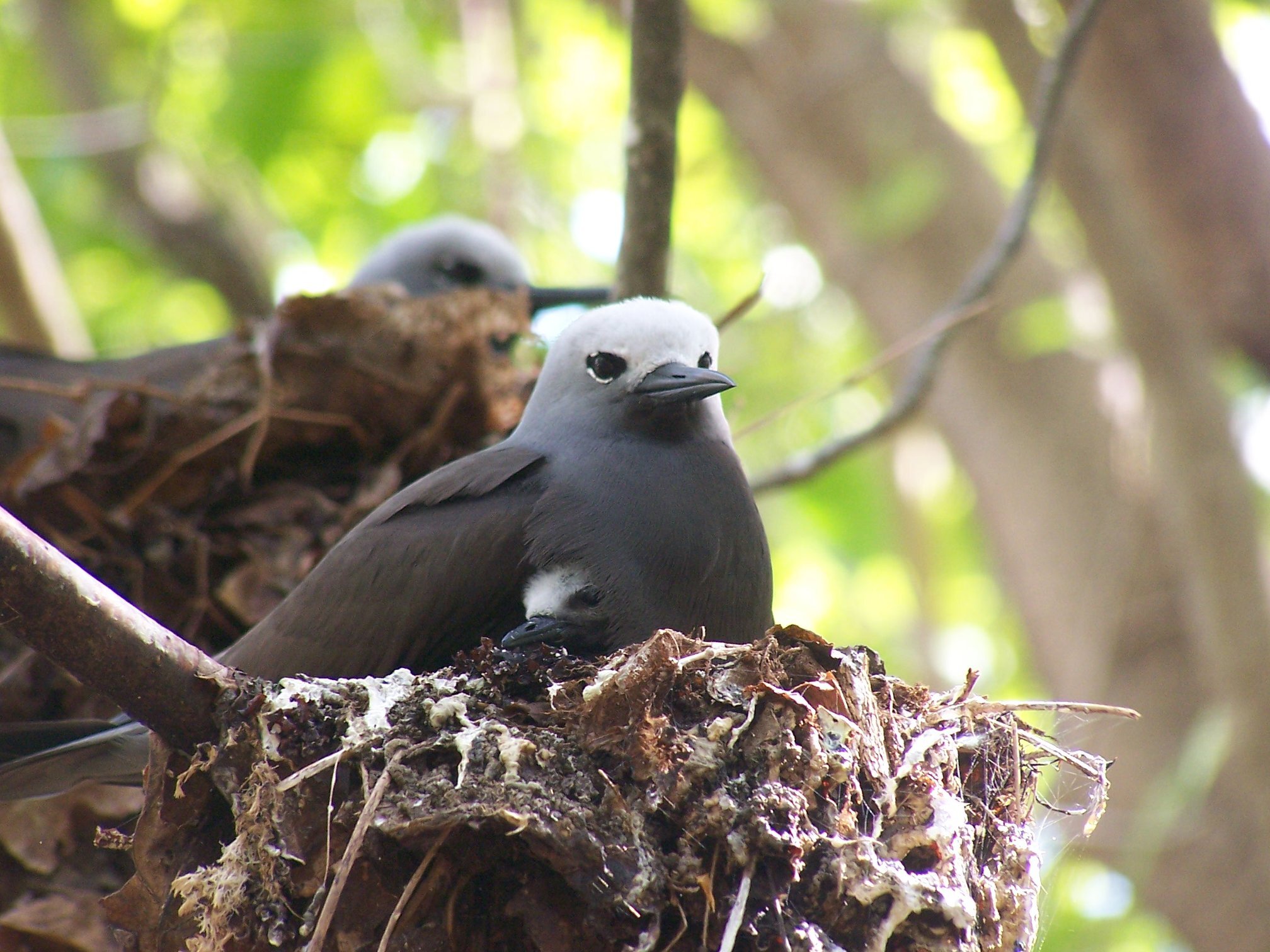Lesser Noddy
The lesser noddy is a small, tropical seabird belonging to the tern family. It has dark plumage and a long, slender black bill. It is one of the most abundant seabirds in the Seychelles, with more than 300,000 pairs known to breed on rat- and cat-free granitic islands, including Cousine Island which boasts a healthy population of just under 55,000 pairs. The diet of the lesser noddy consists mainly of small fish and squid, and this species hunts by flying low over the sea before hovering and dipping down to pick prey from the surface of the water.
Lesser noddies breed annually and at the same time each year, which coincides with the southeast trade winds. Nests are generally constructed from leaves and seaweed, which are placed strategically on tree branches. This differs from most other tern species which generally choose to nest on the ground. Although the time of egg laying may vary from one year to the next, it usually starts in May, with a peak in early June.
A single egg is laid by the female and is incubated for an average of 35 days. Chicks fledge at the age of 55-70 days. The entire process can take between 90 and 105 days depending on the availability of food. In some cases, chicks have been known to take almost half a year to fledge. This is an incredible amount of effort and is sure to take a toll on the parents. Juveniles take approximately 3-4 years to reach maturity and will only return to land to breed. Outside of breeding, adults spend their time together in flocks with other seabirds foraging for food near their breeding colonies.
The lesser noddy is a small, tropical seabird belonging to the tern family. It has dark plumage and a long, slender black bill. It is one of the most abundant seabirds in the Seychelles, with more than 300,000 pairs known to breed on rat- and cat-free granitic islands,
A single egg is laid by the female and is incubated for an average of 35 days. Chicks fledge at the age of 55-70 days. The entire process can take between 90 and 105 days depending on the availability of food. In some cases, chicks have been known to take almost half a year to fledge. This is an incredible amount of effort and is sure to take a toll on the parents. Juveniles take approximately 3-4 years to reach maturity and will only return to land to breed. Outside of breeding, adults spend their time together in flocks with other seabirds foraging for food near their breeding colonies.

